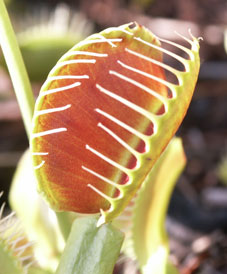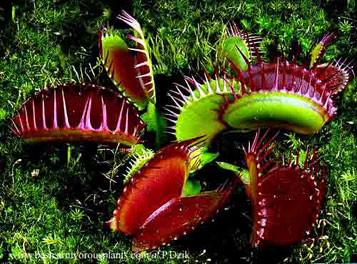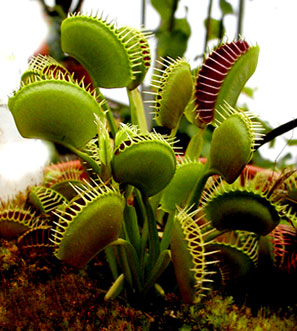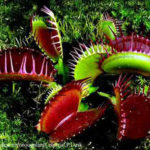Venus Flytrap: The Fascinating Carnivorous Plant
Few plants are as captivating as the Venus flytrap (Dionaea muscipula). This carnivorous insect-eater appeals to the kid in everyone.
Native Habitat
Although they look like they come from outer space or a distant locale, Venus flytraps are actually native to the United States. In nature, they can only be found within a 100-mile area along the coast of North and South Carolina.
Plant Characteristics

The Venus flytrap is not a large plant; it gets about six to eight inches in diameter. The leaves of the plant consist of toothed traps that lure and digest insects. When trigger hairs inside a trap are touched, the plant responds by closing on its prey. It takes up to a week for a flytrap to digest a fly and other insects. The trap reopens to display the evidence—a shriveled insect carcass.
Growth Cycle
A warm-weather plant, the flytrap is active from April through October. It goes dormant in the winter, requiring the cold days of December and January to store energy and remain healthy. When it’s dormant, the flytrap can withstand very cold temperatures, but the 40s and 50s are ideal.
Cultural Tips for Growing Venus Flytraps
- Provide Ample Light: The flytrap is similar to a succulent in its light requirements. Place it in full sun outdoors. During especially hot days in summer, move to partial shade. Indoors, provide at least two to three hours of sun a day.
- Water Properly: Flytraps like to be kept moist, and the right type of water is critical. Don’t use regular tap water on flytraps, as it is too high in salts and minerals. Avoid softened water as well. Good water choices include deionized, reverse osmosis, distilled, and rainwater. Unlike other plants, Venus flytraps should sit in standing water. Keep pots in a dish that contains about an inch of water at all times.
- Feed Well: Most experts recommend not fertilizing your flytraps at all, as the plant receives its nutrients from the insects it eats. Outdoor plants will catch their own victims, but those grown indoors require you to feed them. Good food choices include flies, sowbugs, ants, small moths, and spiders. Avoid using hamburger, cheese, and similar foods, as they will prematurely rot the traps. Make sure to touch the tiny trigger hairs inside of the trap, which activates it to close. Overfeeding is impossible; the more you feed, the stronger the plant. It’s best if one trap is feeding at all times.
- Repotting: For best results, it’s a good idea to repot flytraps every two years. This is best done at the tail end of dormancy in January or February. The soil mix recommended by most experts is two parts peat moss and one part perlite or silica sand. Moisten the mix before planting. Flytraps do best in plastic pots.
- Move Outside for Winter: If you choose to grow your flytrap indoors, bring it outside during winter months so that it can receive adequate chilling. Watch that it doesn’t become waterlogged during winter rains, though, or it could drown.






